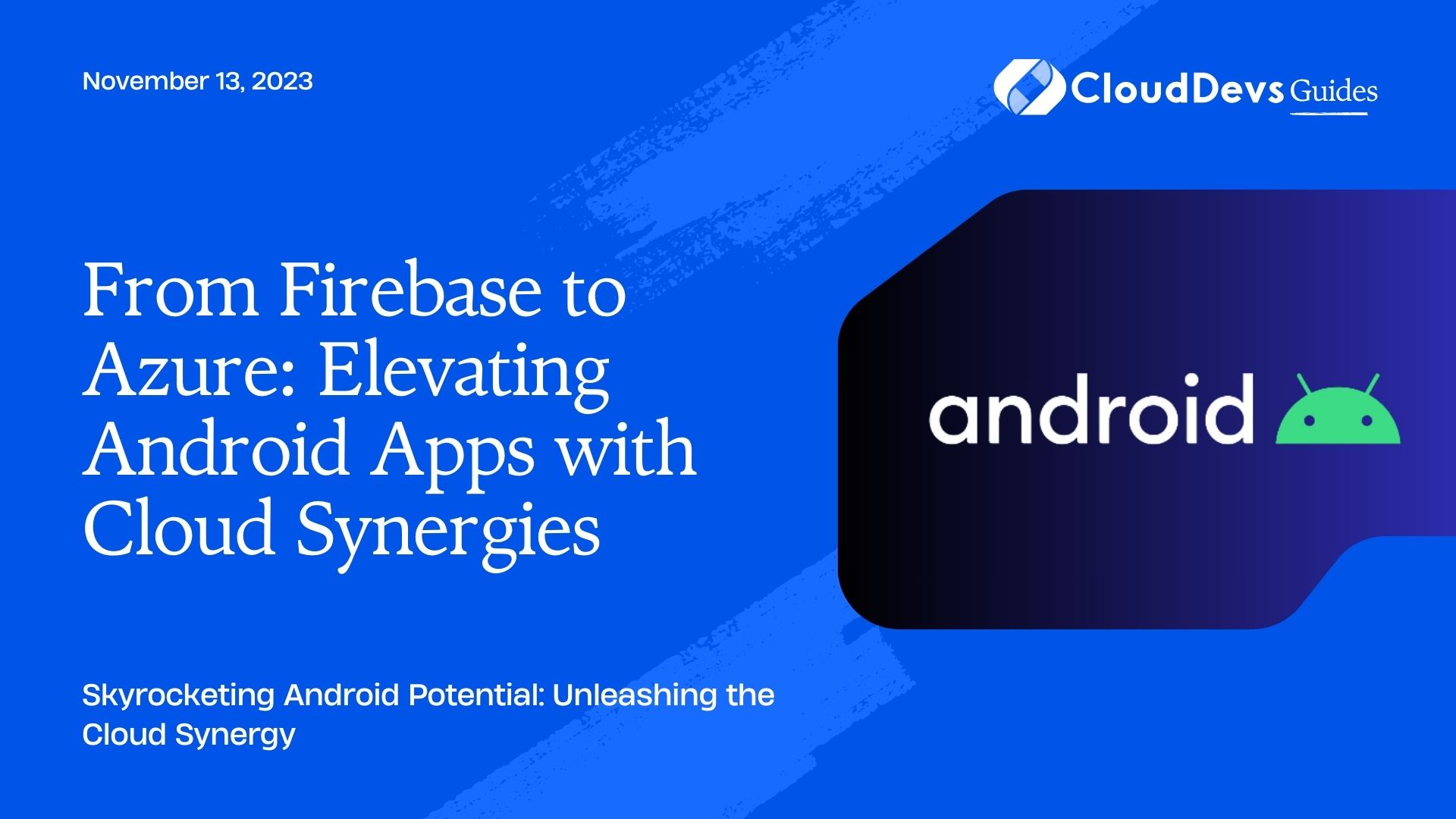From Firebase to Azure: Elevating Android Apps with Cloud Synergies
In today’s hyperconnected world, the collaboration between mobile applications and cloud platforms is almost inevitable. Android, as a leading mobile operating system, continues to evolve with the capabilities to integrate seamlessly with cloud services. Whether you’re looking to store data, analyze user behavior, integrate advanced machine learning into your app, or hire Android developers for a customized solution, the cloud provides an unparalleled infrastructure. In this article, we’ll delve into how Android applications can integrate with cloud services, citing real-world examples to illuminate the process.
Table of Contents
1. Why Integrate Android with Cloud Services?
- Scalability: Cloud platforms handle increasing user demands without the need for manual intervention. As your Android app grows, the cloud ensures it can accommodate more users and higher loads.
- Cost Efficiency: Instead of investing in physical hardware, using cloud services allows you to only pay for what you use.
- Security: Cloud providers like AWS, Google Cloud, and Azure offer advanced security features, ensuring that your application’s data remains secure.
2. Common Cloud Integration Use Cases
- Data Storage: Instead of storing data on a device, apps can store and retrieve data from the cloud. This ensures the data is available across devices and even if the device gets lost or breaks.
- Authentication: Cloud platforms offer identity services which can be integrated into Android apps for authentication purposes.
- Real-time Data Sync: For apps that need real-time data sharing across devices, cloud platforms offer real-time databases.
- Machine Learning: Leveraging ML models hosted on the cloud can supercharge your app with AI capabilities without the need to process complex operations on the device.
3. Examples of Android and Cloud Integration
3.1. Google Firebase with Android
Firebase is a cloud solution by Google that offers a multitude of services from real-time databases, authentication to machine learning. Integrating Firebase with an Android app is straightforward:
– Real-time Database: By using Firebase’s Real-time Database, a chat app can deliver instant messages between users without the need for any backend coding.
– Authentication: Firebase Authentication provides backend services to authenticate users using passwords, Google, Facebook, and more. An e-commerce app, for example, can use Firebase Authentication to securely log in users and manage user accounts.
3.2. Amazon Web Services (AWS) with Android
AWS offers a wide range of cloud services. An example would be Amazon S3, a storage solution.
– Data Storage: A photo-sharing app can use Amazon S3 to store user photos. When a user uploads a photo from their Android device, it’s sent to S3. When another user wants to view it, the photo is retrieved from S3, ensuring quick and reliable data accessibility.
– Machine Learning with SageMaker: For a recommendation app, you can use AWS’s SageMaker to train ML models. The Android app would send user behavior data to the cloud, and SageMaker would process it and return personalized recommendations.
3.3. Microsoft Azure with Android
Azure is another giant in the cloud industry, offering a plethora of services that can be integrated with Android.
– Azure Cosmos DB: An online gaming app can use Azure Cosmos DB to maintain player scores and game states in real time.
– Azure Cognitive Services: An Android translation app can harness the power of Azure’s Cognitive Services to translate texts or even recognize and describe images.
4. Steps to Integrate Cloud Services with Android
- Choosing the Right Cloud Service: Depending on your app’s requirements (storage, machine learning, databases), pick the cloud service that suits you best.
- Setting up SDKs: Almost all cloud platforms offer SDKs for Android. This involves adding dependencies to your `build.gradle` file.
- Authentication: Before making requests to your cloud service, your Android app might need to authenticate. This typically involves API keys or OAuth tokens.
- Data Operations: Once authenticated, you can execute CRUD (Create, Read, Update, Delete) operations or any other service-specific operations on your cloud platform.
- Handling Responses: Data retrieved from the cloud will usually be in JSON format. Handle this data in your Android app and present it to the user or process it as required.
Conclusion
The fusion of Android and cloud services empowers developers to build robust, scalable, and advanced applications. For businesses looking to harness this power, the option to hire Android developers becomes increasingly attractive. As we’ve seen through the examples above, the integration process, while multifaceted, is facilitated by the tools and services provided by major cloud platforms. Embracing the cloud not only amplifies your app’s capabilities but also ensures that it remains resilient and adaptive in the face of evolving technological landscapes.
Table of Contents






